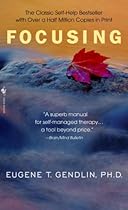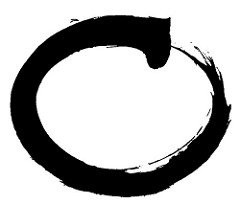
“In making our minds up, we set them up to be broken down.
We create the conditions for doubt by trying to create certainty.”
Once upon a time I knew what I wanted out of life. I knew where I was going. I was going to be a Great Inventor.
And I revelled in that sense of confidence and purpose. I felt sorry for those I saw flopping around, not knowing what they wanted or where they were going. In fact, I was secretly rather scared of becoming like one of those floppy indecisive people.
Just how do we stop flopping around and make our minds up? Well, we simply use common sense — don’t we? Consider the options and arguments, and aim at gradually reaching a clear and unshakeable conviction in what we are doing.
There is nothing like being convinced. It’s like falling in love. We are on top of the world.
Unfortunately, any conviction for or against is horribly questionable, doubtable, suspectable and threatenable. The more we get a hit out of conviction, the more we fear the first slight tremors of doubt. The first shake and we panic.
There’s nothing worse than doubt and indecision. It’s the dejection of having fallen out of love . . . having fallen out of inspiration. And once it starts, it won’t stop. It spreads. Everything is doubtable.
We can build our lives on an apparently unshakeable conviction, prop it up with arguments, cement it with passion and seal it with a cool intuitive knowing that it’s right. For a day, for a week, for a year, for a decade.
Until we see through it. And then the world rocks and we panic — and leap to the conclusion that we had it all wrong. Then we doubt that too. We don’t know where we are.
In desperation, with no option left, no way out, we can decide to stay with what is happening now — not believing we’re right or wrong — and resolve to face the doubt and fear. However, unhappily, that resolve is also doubtable, shakeable and collapsable.
We are forced to the choice that all of us have to make eventually. Finding no safety in a decision, or in the resolve to stay with “what’s so’, then we simply have to stay with what’s so. But not as a second-hand resolve about the future; therein lies only danger and threat. We stay directly with what’s so, choosing it at first hand, immediately. We don’t decide to do it. We do it.
That’s the choice none of us can ultimately avoid. It’s the choice the universe inexorably forces us to make. And we will keep spinning around in the world of conviction and doubt until we make that choice.
Most of our other choices are attempts to avoid making this unavoidable choice. For deciding “I want such and such” is failing to make the only safe choice. Any package of arguments, reasons, intuitions and convictions is threatenable, doubtable and insecure — and it is unsafe because it is a construction. We are building on sand.
Peace lies in choosing what has already been chosen. We learn to stop making our mind up — to see through the Great Inventor. A mind made up will be made down. There is safety where there is no made-up mind, no inventions, no fabrications, no lies.
So how do we choose that uncertainty which we compulsively avoid choosing by making our minds up? Firstly, we need to be honest and acknowledge how unbearably thirsty for certainty and safety we are. See the thirst which makes us make decisions.
Secondly, we need to look closely at those decisions and see that they are inherently unsafe, because they are made up. We might decide to do one thing, but that decision is unsafe. We might decide to do the opposite, but that decision is unsafe. We can decide to not decide and just watch it all — but that decision too is unsafe.
If we really see how unsafe it all is, and are honest about how desperately thirsty we are, then that thirst starts to burn. Despair burns. With nowhere to go, no way out, it turns on itself. The flame is turned right up and turned in on itself.
It burns until it stops, until it is burnt out. And what is left? What is left is what is not made up, what is not put together, what is not constructed. A mind that cannot be “made up’. The safe choice.
Real faith, true conviction is not a construct. It is trusting what is before construction.
However, in a particular situation often a decision has to be made. We have to be practical, don’t we? So we decide on something as a working hypothesis. But if we cling to that, for even one moment, we become afraid of the doubt. And because we fear the doubt, it comes to get us. As it comes to get us, we cling all the more. And so we get hammered.
The thing that would end the doubt and fear would be to let go of deciding to do what we want to do. But we are terrified: if we let go of our decision, we might not get what we want. So we hammer ourselves. Wanting and doubting flare up, until we are hammered into letting go.
In making our minds up, we set them up to be broken down. We create the conditions for doubt by trying to create certainty. For we are afraid of doubt to the degree that we are trying to be certain. We might feel that if we don’t hold fast to our decision, the doubt will win over. But actually, if we do that, then the doubt wins over precisely because we were afraid it would. If we are afraid doubt will win, it already has.
In trying to invent certainty for myself, I invent my own doubt. “I” am the Great Inventor, obsessively struggling to construct the perfectly made-up mind . . . and instead I invent the Frankenstein Monster of Doubt.
In reality, “I” can’t make a secure decision for or against. “I” can’t go one way and “I” can’t go the other. Nor can “I” form a secure resolve to stay unmoved watching both. There is no room for any of “my” constructions at all. When “I” struggle, “I” burn up. “I” burn in my own desire.
Finally, the whole vain building project crumbles and one abides in the foundation of real experience, where nothing is made up. Once one has seen the builder, That Great Inventor, and his labouring, the corner-stone is pulled out, the construction collapses and one stands quietly in the peaceful empty ruins.
This was written by Anagarika Andrew in 1990 when he was trying to decide whether or not to become a Buddhist Monk. He is now Ajahn Punnyo a Buddhist Monk at Ratanagiri Buddhist Monastery.
Kindly contributed to Zen Moments by the author.
This article was first published in the Forest Sangha Newsletter – reproduced with kind permission.
 Focusing By Eugene T. Gendlin “Focusing is a new technique of self therapy that teaches you to identify and change the way your personal problems concretely exist in your body. Focusing consists of steps of felt change. Unlike methods that stress “getting in touch with your feelings,” there is a built-in test: each focusing step, when done correctly, is marked by a physical relief, a profound release of tension. Focusing guides you to the deepest level of awareness within your body. It is on this level, unfamiliar to most people, that unresolved problems actually exist, and only on this level can they change.” (Amazon.com reviews)
Focusing By Eugene T. Gendlin “Focusing is a new technique of self therapy that teaches you to identify and change the way your personal problems concretely exist in your body. Focusing consists of steps of felt change. Unlike methods that stress “getting in touch with your feelings,” there is a built-in test: each focusing step, when done correctly, is marked by a physical relief, a profound release of tension. Focusing guides you to the deepest level of awareness within your body. It is on this level, unfamiliar to most people, that unresolved problems actually exist, and only on this level can they change.” (Amazon.com reviews)
Once you get in touch with whatever your body/mind is experiencing in the present, you focus on that “felt sense.” Keeping your conscious awareness tuned to that feeling causes a movement in the energy, and ultimately a shift occurs,which you can physically feel as a release of a blockage or a point of tension. This technique works very well for those problems and issues that you thought you had worked through, but keep returning over and over again. The best part is, you can do this work without a therapist. After a while, you will find that your body (or rather, body/mind) becomes your best teacher on all matters of the heart and soul.”

Yes well peace is the comfortable option conflict is much more entertaining, while the joy enthuses us and the fear repulses us nothing else will make you feel more alive, although finding a moderate balance between conflict and peace is probably the healthiest option.